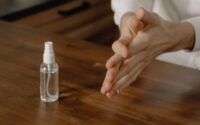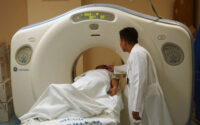Medical Record Technician Questions Answers
Medical Record Technician Questions Answers will be available here for download. Therefore, all the contenders can make use of this chance and start to download the MR Technician Solved Question Papers.
Because by solving the Medical Record Technician Questions Answers Model Papers you can improve your knowledge. So, you start working on the Medical Record Technician Questions Answers Sample Papers from now itself.
Also, check for download the Health Records Technician Old Papers with Solutions from the link provided below. The Solved Medical Record Technician Questions Answers Papers helps you to prepare well for the exam topic wise and obtain very good marks.
Therefore, go through this post thoroughly and download the MR Technician Last Year Question Papers. Here we have given Health Information Technicians Recruitment Sample Question Papers with subject wise. Use the Health Records Technician Solved Papers as a reference only.
MR Technician Exam Syllabus
- Definition of Medical Records
- Importance of Medical Records
- Uses of Medical Records
- Values of Medical Records
- Aims and objective of Medical Records
- Central Admitting Office
- Medical Records Form
- Retension and Preservation of Medical Records
- Hospital Management information system
- Medical Terminology
- Legal aspect of Medical Records
- Hospital statistics
- Coding and Indexing
- Daily census
- Assembling and deficiency check
- International classification of disease
Model Questions and Answers on Medical Record Technician
1. The general meaning of “corpus” is
A. Abdomen
B. Body
C. Chest
D. Head
2. Which of the following is the term for an abnormally low white blood cell count?
A. Anemia
B. Leukemia
C. Leukopenia
D. Leukopiakia
3. Menarche refers to which of the following?
A. Beginning of menstruation
B. Development of female characteristics
C. End of childhood
D. Primary infertility
4. Which of the following is the term for abnormally large breasts in men?
A. Gynecomania
B. Gynecomastia
C. Gynephobia
D. Gynoplastics
5. Which of the following terms means drainage from the nose?
A. Fthinomycosis
B. Rhinophyma
C. Fthinorrhaphy
D. Fthinorrhea
6. The prefix pertaining to fingernail is
A. Olfact-
B. omphai-
C. onco-
D. onych-
7. Hidradenitis Inflammation of a sweat gland is known as
A. Fasciitis
B. Hidradenitis
C. Pimelitis
D. Rhinitis
8. The patient’s complaint of painful menstrual periods will be documented in the medical record as
A. Dysmenorrheal
B. Menorrhagia
C. Menorrhea
D. metrorrhagia
9. Which of the following suffixes refers to eating?
A. “phagia”
B. phonia”
C. “plegia”
D. “phasia”
10. Which of the following terms refers to pain?
A. Diplopia
B. Arthralgia
C. Dysplasia
D. Hemiplegia
11. Which of the following is the definition for aphagia?
A. Extreme thirst
B. Inability to hear
C. Inability to swallow
D. Loss of hair
12. OS is a standard abbreviation for
A. left eye
B. right eye
C. left ear
D. right ear
13. Instructions to take a medication pc’ means
A. at bedtime
B. before meals
C. after meals
D. every morning
14. “K” is the symbol for
A. Barium
B. Calcium
C. Iron
D. potassium
15. A pyloromyotomy is performed in which of the following body systems?
A. Cardiovascular
B. Gastrointestinal
C. Musculoskeletal
D. Nervous
16. Which of the following is a procedure in which synovial fluid is removed for analysis?
A. Apheresis
B. Arthrocentesis
C. Arthrography
D. Arthroscopy
17. Which of the following procedures is indicated when an abnormal growth is identified on barium enema x-ray study?
A. Arthroscopy
B. Bronchoscopy
C. Colonoscopy
D. Cystoscopy
18. A patient who has hypergonadism, prolactinoma, and hirsutism will most likely be referred to which of the following specialists?
A. Lmmunologist
B. Pathologist
C. Rheumatologist
D. Endocrinologist
19. Polydipsia, polyuria, good appetite with weight loss, and blurred vision are signs and symptoms of
A. diabetes meilitus
B. gout
C. hypothyroidism
D. marasmus
20. Act for the registration of Birth and Death came into force in the year
A. 1967
B. 1969
C. 1971
D. 1977
21. Space (in square meters) requirement for Medical Record Department for 250 bedded hospital is
A. 122
B. 133
C. 166
D. 177
22. Under which rule of RTI Act, 2005, medical record is not provided to the third party
A. 8(1)(e)
B. 8(1)(f)
C. 8(2)(a)
D. 8(2)(b)
23. Nephron is the minute structure of the system
A. Urinary
B. Circulatory
C. Digestive
D. Respiratory
24. Pituitary gland dysfunction causes
A. Hyper secretion
B. Hypo secretion
C. Either (a) or (b)
D. None of above
25. Normal pulse rate in adults is
A. 60-80
B. 80-90
C. 90-100
D. 100-110
26. The first real physician of record is
A. Edwin Smith
B. Imhotep
C. Andreas Vesalius
D. James Henry Breasted
27. Medical Record has been described as “a store house of knowledge concerning the patient” by
A. Mr. Malcolm T. MacEachern
B. Mrs. Edna K. Huffman, HRA
C. Dr. J.Fl. Mc. Gibony
D. None of above.
28. St. Bartholomew’s Hospital London is still in existence from
A. Medieval period
B. Greek period
C. Graeoo-Roman period
D. Byzantine – Period
29. Which committee is educative committee and not punitive?
A. Medical Audit Committee
B. Medical Record Committee
C. Medical Ethics Committee
D. . None of above
30. In which numbering system old admitted record is filed with the latest admitted record
A. Serial numbering system
B. Unit numbering system
C. Serial-unit numbering system
D. None of the above
31. Subpoena duces tecum term is used for producing record before
A. Medical Audit Committee
B. In the court of law
C. Medical Record Committee
D. Board of members conducting postmortem
32. Which of the following is the large bone found superior to the patella and inferior to the ischium?
A. Calcaneus
B. Femur
C. Symphysis pubis
D. Tibia
33. Which of the following are mucus-producing glands located on each side of the vaginal opening?
A. Adrenal
B. Bulbourethral
C. Banholin’s
D. Corpus luteum
34. Oxygenated blood is carried to the heart by which of the following structures?
A. Aorta
B. Carotid arteries
C. Inferior vena cava
D. Pulmonary veins
35. Full form of the ICD-10 is
A. International Classification of Diseases
B. International Statistical Classification of Diseases and Related Health Problems
C. International Statistical Classification of Diseases
D. International Classification of Diseases and Related Health Problems
36. Mortality rules and its modification rules used in Medical Certification of cause of death are
A. Mortality rules 4; modification rules 4
B. Mortality rules 6; modification rules 4
C. Mortality rules 4; modification rules 6
D. Mortality rules 6; modification rules 6
37. The maternal death rate is ratio of total number of obstetrical deaths & deaths within days of M.T.P.
A. 7 day
B. 12 days
C. 24 days
D. 42 days
38. Still birth is death occurring after
A. 14 weeks of gestation
B. 21 weeks of gestation
C. 28 weeks of gestation
D. 32 weeks of gestation
39. Disease or injury that initiated the train of morbid events leading directly to death or the circumstances of the accident or violence that produced the injury is called
A. Cause of Death
B. Underlying cause of death
C. Both a and b
D. None of the above
40. Consumer Protection Act came into existence in the year
A. 1986
B. 1988
C. 1990
D. 1991
41. Ayushman Bharat Yojana launched in Sept. 2018 applicable to the
A. Outdoor patients only
B. Indoor patients only
C. Both Outdoor and Indoor patients
D. None of above
42. Any vital event like birth or death occurred in an area is to be reported to the nearest health centre within a period of
A. 7 days
B. 14 days
C. 21 days
D. 28 days
43. Sharp instruments and fiberoptic material like endoscope and bronchoscope etc. are sterilized by the following method
A. Ethyline oxide sterilization
B. Steam sterilization
C. Hot air sterilization
D. Chemical method
44. Vaccine used for the prevention of Whooping cough is
A. BCG
B. OPV
C. DPT
D. DT
45. The first AIDS cause was reported in New York In
A. 1971
B. 1981
C. 1991
D. 1961
46. Tuberculosis is caused by
A. Myobacterium
B. Salmonella
C. Staphylococcus
D. Vibrio
Download More Questions on Paramedical Science
- ECG Technician
- Dental Technician
- Emergency & Trauma Technician
- Medical Counsellor
- Dialysis Technician
- Nutritionist
- Physiotherapist
- Operation Theatre Technician
- Clinical Psychologist
- Ophthalmic Technician
- Sanitary Inspector
- Radiographer Technician
- Ward Master
- Pharmacist
- Radiotherapy Technologist
- Clinical Instructor
- Medical Laboratory Technician
- X-Ray Technician



